Whenever I see an injured bird my heart sinks and for some illogical reason my angst is even greater when it’s a raptor. For that reason I was very curious about something about this hawk that I first noticed through my lens .
I hate to post this first image because the bird isn’t particularly sharp (for a variety of reasons related to the driver being the photographer) but this image best shows what I noticed.
While photographing this adult at Farmington Bay two days ago I noticed some kind of apparent anomaly where the upper mandible meets the forehead. At the time I thought it might simply be some unruly feathers.
But a huge crop (that sadly exaggerates the softness of the image) also reveals a possible abnormality involving the cere (fleshy, featherless skin covering of the base of the upper mandible). The normally yellow, fleshy cere of this species seemed to be largely missing or diminished on the right side and the feathers above the nostril appear to be matted. This wasn’t just a momentary phenomenon as I noticed it for nine full minutes after the hawk flew to its next perch.
The bird then flew to this kestrel box and eventually turned to an angle that allows a good look at the normal-looking left side of the cere.
Another heavy crop (of the previous image) shows the normal side of the cere better. Notice that it is fleshy, featherless, yellow, surrounds the nostril and looks quite different when compared to the right side .
I probably wouldn’t have paid a lot of attention to an unusual looking cere if I hadn’t also noticed the blown left eye (pupil appears to be “leaking”). The injured eye suggested to me the possibility that the anomalous cere could also be an injury.
When the bird took off after prey the white “bump” on the far side of the bill was still visible.
But when it returned to the nest-box it wasn’t nearly as apparent. And the right side of the cere looked more normal.
And finally, another large crop of an image after the hawk landed leads me to believe that the cere is actually normal and I was misled by out-of-place feathers, my attempt to “diagnose” through the viewfinder and my empathy for raptors.
When I first began writing this post I was convinced the cere was abnormal and I was too willing to go with that flow. Then the blown eye, which I hadn’t noticed in the field, led me further down the primrose path. Usually I pride myself on being clinical in my observations and careful about my conclusions. I almost blew it this time.
Yet another lesson learned. Hopefully…
Ron
Note: The blown eye doesn’t seem to interfere with the ability of this bird to capture prey. I saw it catch a vole or mouse and gobble it down in two “bites”.


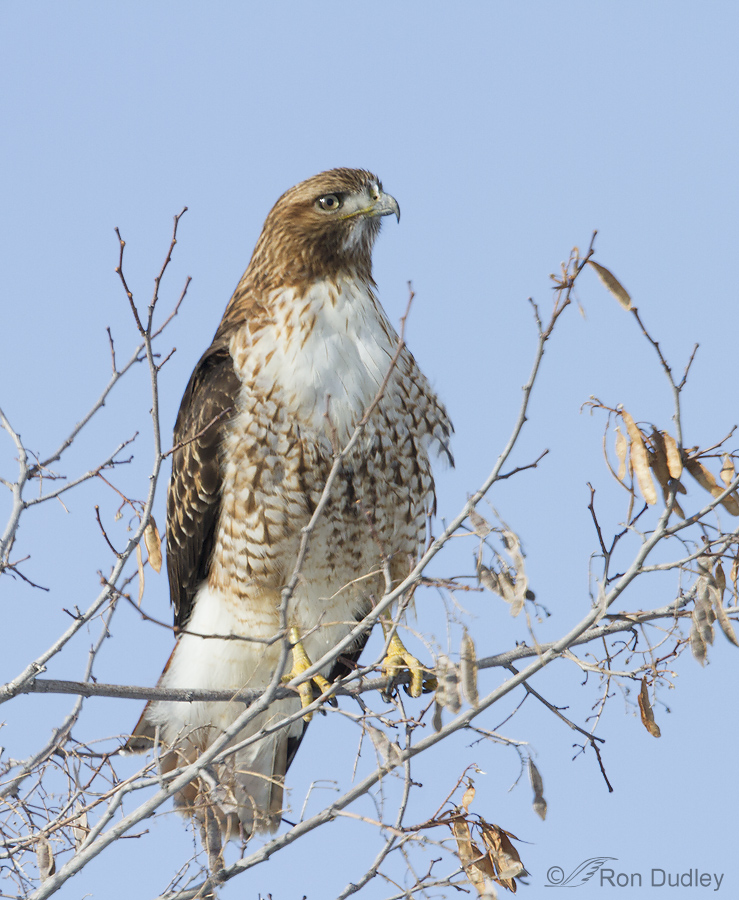
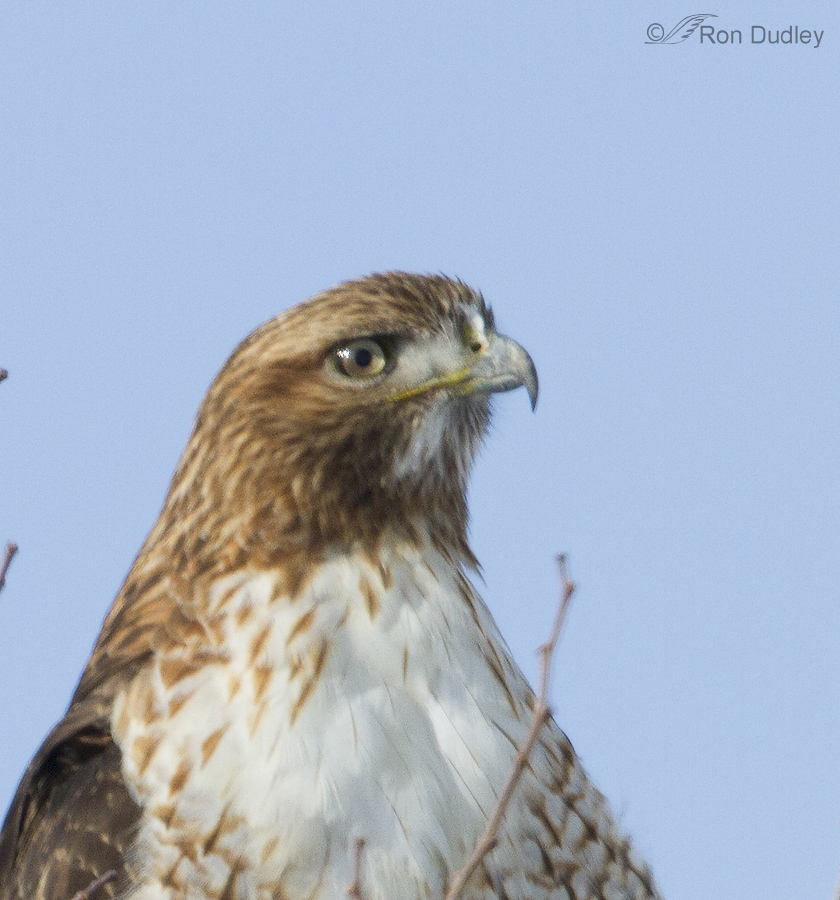
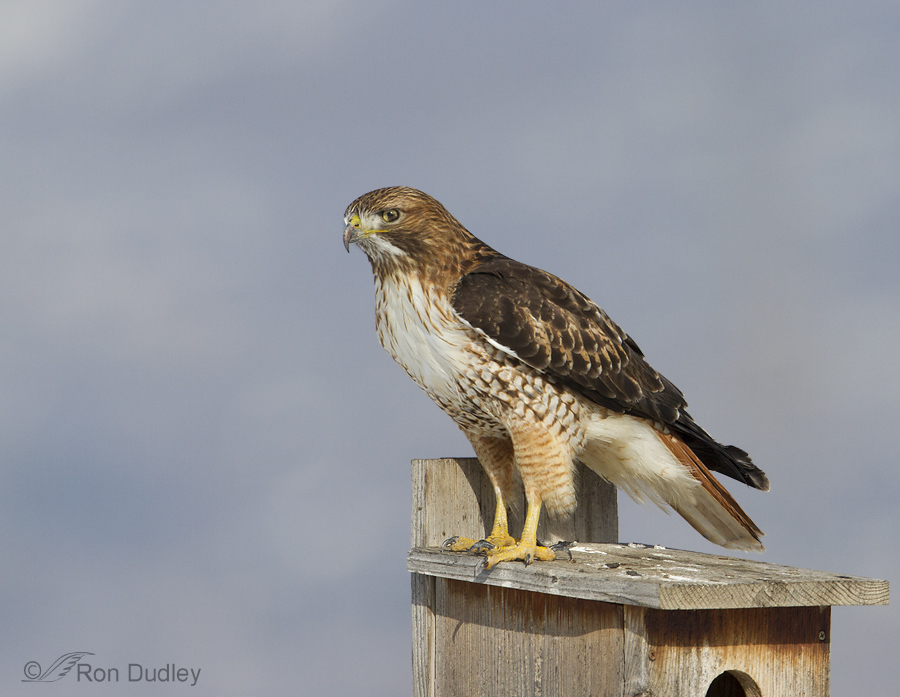
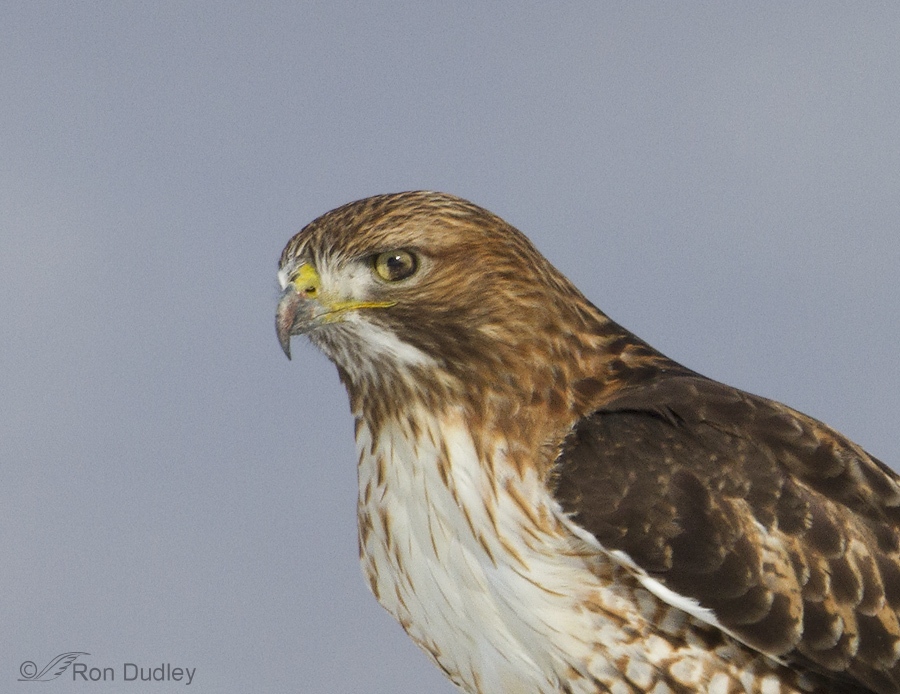
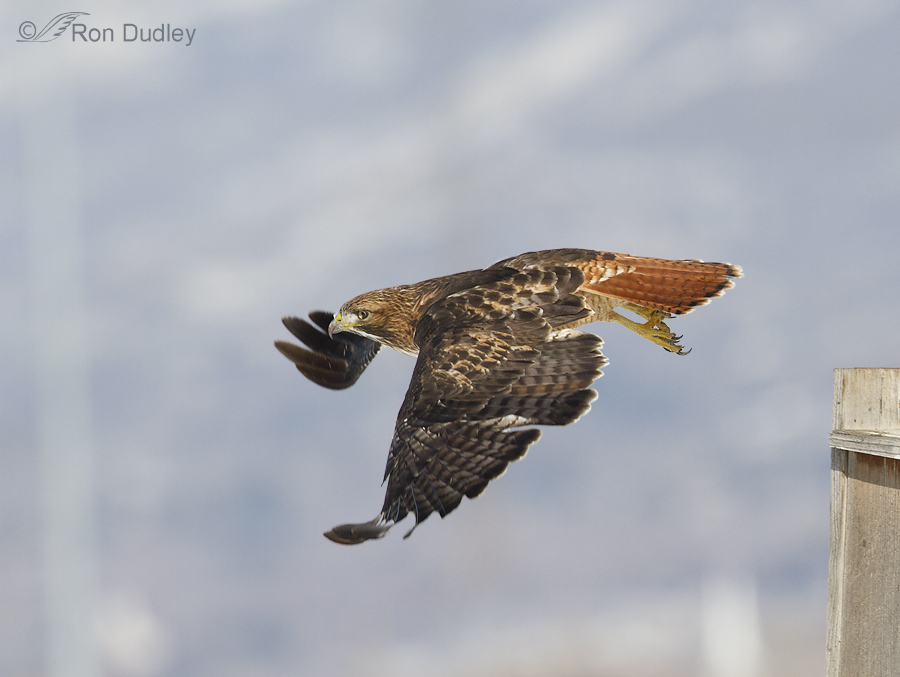
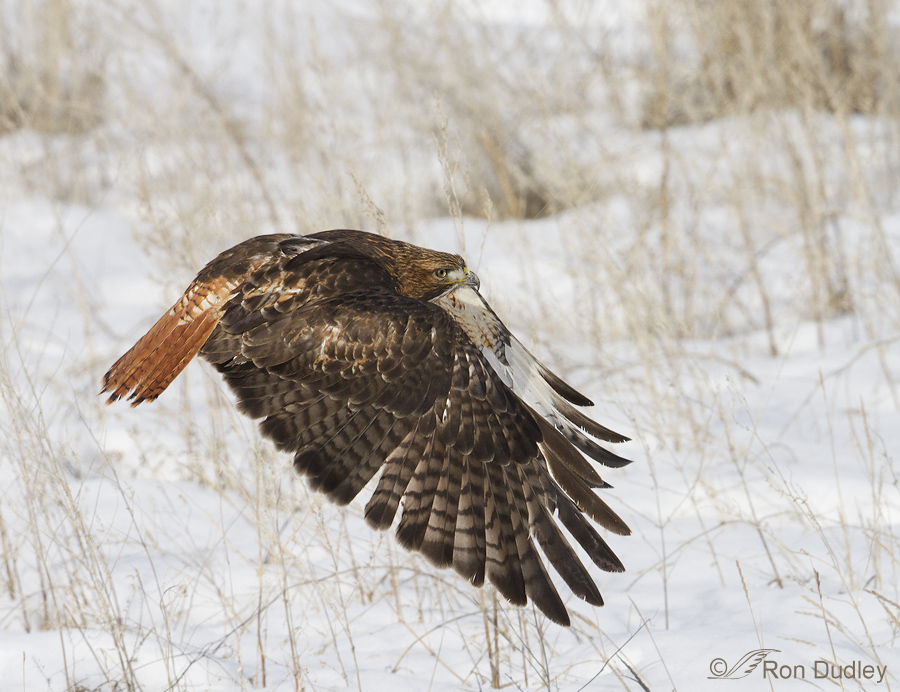
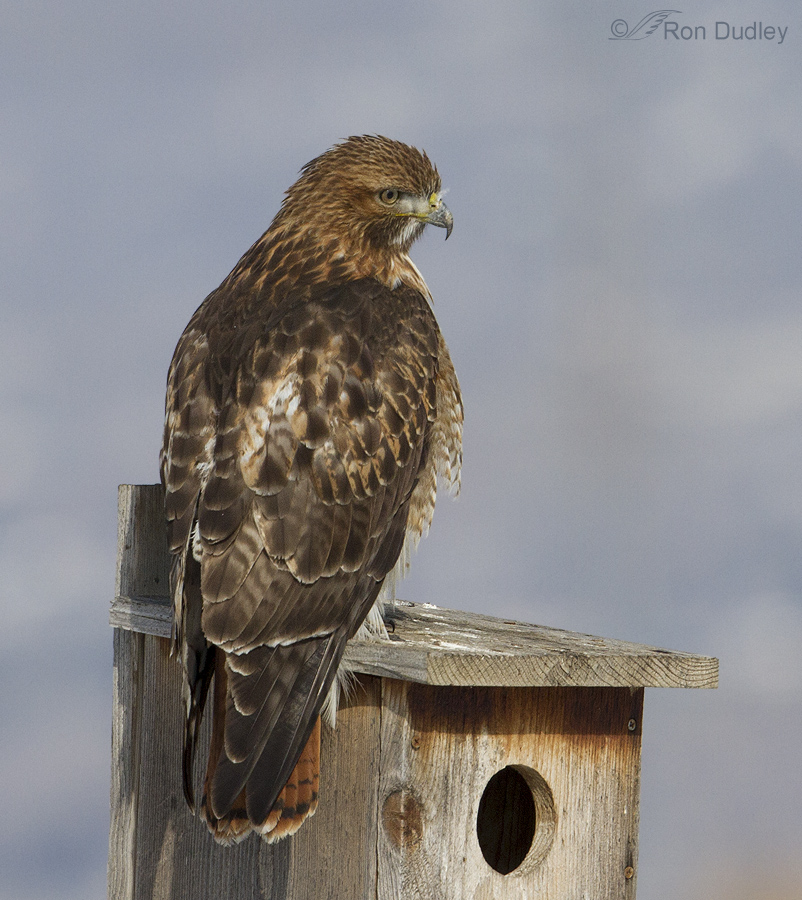
Ron. I sent the photo to a vet friend and she thought of ocular melanosis. Same as in people, I am a human doc. Seems right as the hawk hunts and this doesn’t have the appearance of an injury
Photo is great. Thank you
Interesting, Diana. I just looked it up and it does seem like it could fit what we see in this birds left eye. Thanks for going the extra mile on this!
Diana–as a non-medical person, does that basically mean a “atypically placed patch if color”? I think I’ve seen this in humans…with no apparent vision problems…
What sensational shots Ron! Thanks for sharing!
Charlotte
I suspect/believe that this is a lesson you WONT learn. You care. You worry. Which is right and proper. I am so glad that in this case your worry was misplaced (but not wrong) and even more glad that the eye injury didn’t threaten survival.
Thanks, Elephant’s Child. From what I’ve seen with multiple raptors with blown eyes, some of them adapt and hunt very successfully. This one seems to be doing just that.
Just the fact that you were detailed enough in your observation to even note a possible anomaly speaks volumes about you and your care for your subjects as well as your craft.
We should all be so diligent.
I’ve just got to learn to be even more careful about conclusions, Wally.
They have such a continual struggle just to survive no wonder it hurts to see one injured, particularly in any way that would cause them any suffering or, worst of all, that interferes with their ability to secure food….it was so good to read that you saw her hunt and feed OK. (A compassionate “error” isn’t something to be unlearned…Your care and concern for all wildlife, especially the raptors, comes through very clearly…as does your integrity…so, you’ll probably make similar “errors” many times more…your observations and your attention to detail is amazing!)….
Thank you, Patty.
Ah yes, how our empathy colors our emotions and thus our conclusions! Right with you Ron! A step back is always a good thing!
Great shots and very interesting commentary.
Thank you, Dick. Your comment (empathy, emotions and conclusions) nailed it.
They have such a continual struggle just to survive no wonder it hurts to see one injured, particularly in any way that would cause them any suffering or, worst of all, that interferes with their ability to secure food….it was so good to read that you saw her hunt and feed OK.
Patty, right now I’m reading about a local Red-tail that is hanging upside down in a tree and in distress. Authorities have been contacted but it’s dark and I don’t know how it will turn out. You’re right about the “continual struggle”.
It truly is a joy learning from your keen observation and years of experience … and whether or not “particularly sharp” your images allow me and others to observe birds I’ve not seen before. Thanks for loving what you do so much that you take the time to share your knowledge. For beginners like me, it is much appreciated.
Your “appreciation” is appreciated, Patricia. Thanks.
I appreciate your conscientiousness in keeping an open mind rather than cling to your understandable initial conclusion. Still a teacher and role model!
…but still prone to mistakes. At my age I should know better, but thank you very much for the compliment, Alison.
Ron, does the “blown left eye” mean there was an injury or could it be an unusual iris?
Sharon, based on a comment made by Louise Shimmel (I believe it was her and she’s highly experienced in rehabbing birds) in an earlier post, blown eyes are usually caused by injuries.